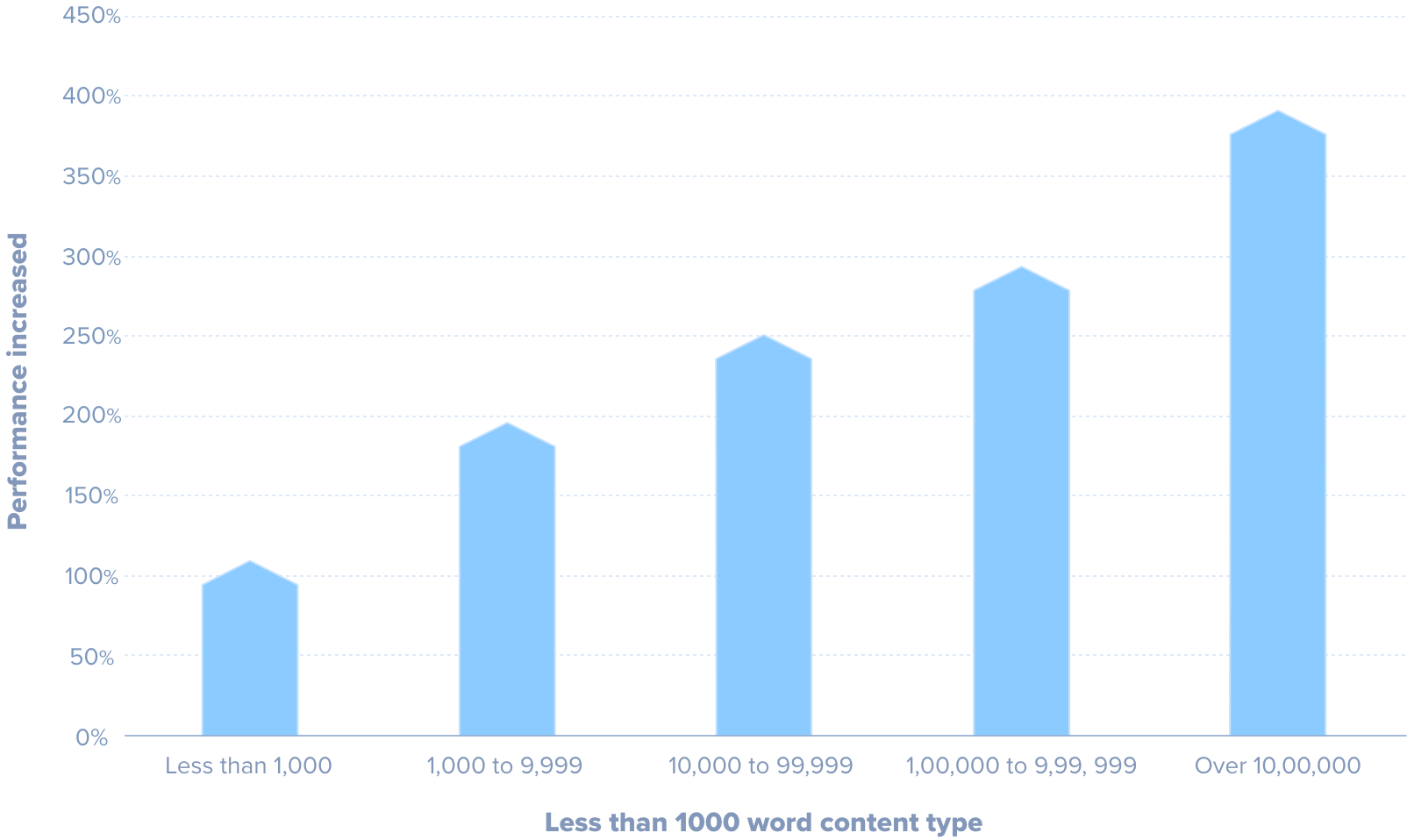Similar to how your car needs routine servicing to ensure smoother performance, your website needs a regular audit to keep it secure and functioning without a hitch. However, many webmasters take action only when they have an urgent need to address an issue. This reactive approach, in almost all cases, is costlier and more time-consuming.
In this blog, we’ll dive deep into the realm of website audits and understand why regular audits are important and how they should be conducted successfully.
Benefits of website audit
A website audit is a crucial process that helps businesses ensure their websites are functioning optimally and meeting the needs of their users. Here are some reasons why a website audit is a must in 2023 and beyond:
- Improved User Experience: In today's digital age, user experience is paramount, and website audits can help you identify areas where you need to improve the user experience of your website. This includes identifying technical issues that may be affecting user experiences, such as slow page loading times, broken links, or confusing navigation.
- Enhanced Website Security: Cybersecurity is a growing concern, and website audits can help identify security vulnerabilities that could put your business and customers at risk. A website audit can help identify any security vulnerabilities on your website, such as outdated software or weak passwords, and suggest ways to improve your website's security and help build trust with your customers and protect your business from potential attacks.
- Boost in SEO: Search engine optimization (SEO) is critical for any website to rank well in search engine results pages (SERPs). A website audit can identify areas where your website is not optimized for search engines, providing you with the opportunity to make changes and improve your search engine rankings.
Doing a website audit can help you improve the overall performance of your website. It can help you identify potential SEO opportunities, uncover usability and accessibility issues, understand user behavior, and identify any technical issues that may be affecting your website’s performance. Additionally, it helps gain insights into your competitors, and their strategies and provides you an advantage over them.
Website Audit and its Types
Auditing a website is a systematic process of examining the website to find issues hampering the website’s health, performance, and function. A direct outcome of it and suggests steps to improve existing issues. A well-conducted website audit paves the way for refined performance, better online ranking, and increased traffic.
To get a competitive edge, it is necessary to have a robust and responsive website and regular audit navigates the route to achieve it.
But, what kind of audit is needed for your website? There are several types of audits that can be conducted depending on your website and business goals. Read on to know what kind of audit is required for your website and the type of audit you should conduct to achieve your business goals.
Types of website audit
- Security audit: A website security audit involves a thorough analysis of a website's security measures, including its protocols, software, and configuration. The audit aims to identify any weaknesses in the website's security and provide recommendations to improve its defenses.
During a website security audit, several areas of the website are examined. These include:
- Network security: This involves checking the website's network infrastructure and ensuring that all connections are secure and protected against external threats.
- Web server security: The server hosting of the website is analyzed to identify any security issues, such as outdated software or vulnerabilities in the configuration.
- Application security: The website's applications and software are analyzed to identify any vulnerabilities or potential risks.
- Data security: This involves examining the website's database and ensuring that all sensitive data is protected and encrypted.
- User security: The audit checks the website's user authentication process and ensures that all user data is securely stored and protected.
By conducting a security audit, website owners can take proactive steps to protect their websites and ensure the safety of users' data.
- Technical Audit: The technical audit involves analyzing the website's code to identify any bugs, errors, or security vulnerabilities. This process includes examining the HTML, CSS, and JavaScript code, as well as any server-side scripting languages, such as PHP or Python. The audit aims to ensure that the code is well-structured, optimized for performance, and free from any security threats.
Another critical element of a technical audit is analyzing the website's architecture. This process involves examining the website's navigation, content structure, and overall design. The audit aims to ensure that the website is user-friendly, easy to navigate, and optimized for search engines.
The technical audit also involves analyzing the website's configuration, including its hosting environment, server settings, and database structure. This process ensures that the website is configured correctly, and its servers are optimized for performance and scalability.
The benefits of conducting a technical audit are numerous. It can help identify potential performance issues, such as slow page loading times, broken links, or errors in code. The audit can also help identify security vulnerabilities, such as outdated software or insecure passwords. By conducting a technical audit, businesses or individuals can take proactive steps to improve their website's performance, security, and user experience.
- Content Audit: A content audit is a comprehensive evaluation of all the content on your website. The goal is to identify areas where you can improve user experience, increase engagement, and ultimately drive more traffic and conversions.
The first step in conducting a content audit is to define your goals. What do you hope to achieve with your content? Once you have a clear idea of your goals, you can start analyzing your current content. This involves identifying all the pages on your website, categorizing them by type (e.g., blog posts, product pages, etc.), and assessing their performance.
Next, you need to evaluate the quality of your content. Is it up to date? Is it accurate? Is it engaging for your audience? Based on your evaluation, you can then identify any gaps or opportunities for improvement. This could involve creating new content, updating existing content, or deleting irrelevant content.
Research by Bright edge shows, how optimized content outperforms non-optimized content when it comes to ranking on the first page of search engine results. As highlighted in the previous section, smaller brands outperform peers by 110% while the largest brands outperform by almost 400%.
- Brands with 1,000 to 10,000 pieces of optimized content beat their nonoptimized peers by over 200%.
- Brands with 10,000 to 100,000 pieces of optimized content beat similarly sized non-optimized counterparts by 250%.
- And brands with 100,000 to one million pieces of optimized content beat rivals by over 300%.

Finally, you need to create a plan of action to address the gaps and opportunities you have identified. This could involve creating a content calendar, assigning tasks to team members, or developing a content strategy.
A content audit can be a time-consuming process, but it can also be incredibly valuable in helping you achieve your goals.
61% of marketers say improving search engine optimization (SEO) to grow their organic presence online is their top inbound marketing priority.
Another crucial aspect of an SEO audit is assessing your backlink profile. Backlinks are links from other websites that point to your site, and they are a significant factor in determining your website's authority and trustworthiness. A healthy backlink profile can help improve your search engine rankings and attract more organic traffic.
Technical SEO is also an essential area to evaluate during an SEO audit. This includes assessing your website's load speed, mobile-friendliness, and security. By ensuring that your website is technically sound, you can improve the user experience and increase your chances of ranking higher in search results.
- Accessibility Audit: An accessibility audit is an important process for ensuring that your website or application is accessible to everyone, regardless of their abilities. It can be done by assessing website navigation, text alternatives, color contrast, keyboard accessibility, and assistive technology compatibility. An accessibility audit can identify and address any barriers that may be preventing people with disabilities from accessing and using your website or application.
Now Improving accessibility not only benefits people with disabilities, but it can also improve the overall user experience for all users. By ensuring that your website or application is easy to use and navigate, you can attract more users and improve customer satisfaction.
Accessibility of a website can be achieved by testing the website against WCAG guidelines. WCAG (Web Content Accessibility Guidelines) provides a framework for creating web content that is accessible to people with disabilities. There are three levels of accessibility conforms that can be achieved via WCAG.
Moreover, places like the US, EU, Canada, and Australia have laws in place for website accessibility and penalties for not adhering to them.
So if you want to make your website or application more accessible, consider conducting an accessibility audit. By identifying and addressing any barriers to accessibility, you can create a more inclusive and user-friendly experience for all users.
When to do a website audit
Ideally, a website audit should be conducted twice a year or whenever a major change occurs on the website. The whole idea behind running a website audit is to ensure that the website is performing at its optimal level at all times and generating the maximum amount of traffic and conversions.
Sometimes websites should be audited if a major change has occurred economically or technologically. Changes in marketing strategies, SEO, or marketing channels can also affect websites in ways that you might not have considered before. In today’s time, a website audit is not just a necessity, but mandatory to make sure that your website is meeting all the global standards.
How to Conduct a website audit
Website audits can be done with the help of some easy-to-use online tools but online tools can only provide a rough idea of what your website may be missing out on. It is advisable to perform a well-structured audit of your website preferably by hiring a professional website auditor.
The benefit of hiring a professional website auditor:
They help you:
- Identify the problem areas in your website early and get them fixed before your competitors do.
- Provide a roadmap to optimize your website for maximum ROI.
- Audit your website with proper techniques and best SEO practices.
- Improve your website UI/UX as per your brand identity and website performance and security.
- Optimize and improve the website with the latest web updates and technologies.
- Find the exact solution to your website problem that is sometimes hard to find and rectify through an online tool.
Website Auditing checklist
To help you visualize the bigger picture and understand how your site is performing, here is a list of questions that should be taken into consideration when conducting a website audit.
Content:
- Are all the pages up to date?
- Is the content up to date and relevant?
- Are there any spelling or grammar mistakes?
- Are the images and videos of high quality?
Design:
- Is the website visually pleasing?
- Is the navigation user-friendly?
- Are there any broken links on the website?
- Are the fonts and colors consistent throughout the website?
Performance:
- Is the website loading fast enough?
- Are all the pages optimized?
- Are there any broken links or images?
- Are there any redirects or errors?
Security:
- Is the website using HTTPS?
- Are there any security vulnerabilities?
- Is the website using the latest security protocols?
- Are there any malicious scripts or codes on the website?
Wrapping up
The last step of the website audit is to wrap up the audit and prepare a report of the findings. The audit should have all the improvements and recommendations that can be implemented to make the website more user-friendly and effective.
To summarize this article, A website audit is a process of thoroughly analyzing and evaluating a website to identify any potential issues that may be preventing it from achieving its goals. It is an essential step for any business looking to improve its online presence, as it allows them to identify areas for improvement and take the necessary steps to make sure its website is optimized for success.
Don't miss out on potential customers due to slow page speed, broken links, or poor content. Ensure that your website is functioning properly and delivering the best possible user experience. Contact us today at [email protected] to get a free website audit and take your online presence to the next level.
Subscribe
Related Blogs
Exploring Drupal's Single Directory Components: A Game-Changer for Developers

Web development thrives on efficiency and organisation, and Drupal, our favourite CMS, is here to amp that up with its latest…
7 Quick Steps to Create API Documentation Using Postman

If you work with API, you are likely already familiar with Postman, the beloved REST Client trusted by countless developers…
What is Product Engineering Life Cycle?

Imagine constructing a house without a blueprint or a set of plans. It will be challenging to estimate the cost and labor…



